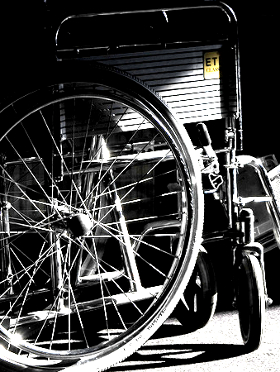Spinal signals revived with electrical backing
 Incredible research has given hope to many suffering paralysis as a result of spinal cord damage, with a small trial in the US showing some excellent results.
Incredible research has given hope to many suffering paralysis as a result of spinal cord damage, with a small trial in the US showing some excellent results.
Four men have been able to regain some functionality in their legs and lower body despite formerly being totally paralysed.
The test subjects have had a small electrical device implanted in their skin and attached to their spinal cord. It sends and receives electrical impulses around the damaged sections of the spine, allowing some new signals to travel between the brain and the body.
After receiving the device and months of gruelling trials and rehabilitative therapy, the four patients, who had been paralysed due to spinal cord injuries for more than two years, could move voluntarily their hips and ankles, wiggle their toes, and stand up for short periods.
The treatment will only work for a limited set of spinal cord injuries, but for some patients it may soon spell an end to years of immobility and frustration.
“The belief that no recovery is possible and complete paralysis is permanent has been challenged,” said researcher Dr Susan Harkema, primary author of an article on the breakthrough published in the journal Brain.
“We have uncovered a fundamentally new intervention strategy that can dramatically affect recovery of voluntary movement in individuals with complete paralysis, even years after injury.”
In epidural stimulation, the electrical current is applied at different frequencies and intensities at specific locations on the lumbosacral spinal cord, corresponding to the dense neural bundles that largely control the movement of the hips, knees, ankles and toes. In recent tests, once the signal was triggered, the spinal cord reengaged its neural network to control and direct muscle movements.
When coupling the intervention with rehabilitative therapy, the impact of epidural stimulation intensified. Over the course of the study, the researchers noted that the participants were able to activate movements with less stimulation, demonstrating the ability of the spinal network to learn and improve nerve functions.
The development has raised the hopes of many in Australia.
Bryce Vissel, a neuroscientist at the Garvan Institute of Medical Research in Sydney, says there are efforts to bring the treatment to Australia as soon as possible.
He told ABC reporters that the discovery really could change the outlook for many.
“The new discovery is basically that in people who don't have a full spinal cord injury, people who've got a little bit of spinal cord injury function left, if they stimulate below the injury, put a little bit of electric stimulation below the injury, pair that with intensive exercise and activity, the spinal cord is able to recover and the function is regained,” Dr Vissel said.
“What’s important is in some of these people, they're starting to regain some bladder control, some bowel control, some sexual function and they're regaining a little bit of movement.”
The four paralysed participants ranged in neurological level from C7–T5 and were at least two years post-injury at the time of the intervention. Two had been rated ‘A’ on the American Spinal Injury Association's classification system, meaning they had absolutely no sensation or cognition below the site of their injury; the researchers were highly sceptical that these men would elicit any voluntary movement as a result of the intervention.
All four have now regained some level of voluntary control over their lower extremities.
The complete article on the latest development is accessible here.







 Print
Print